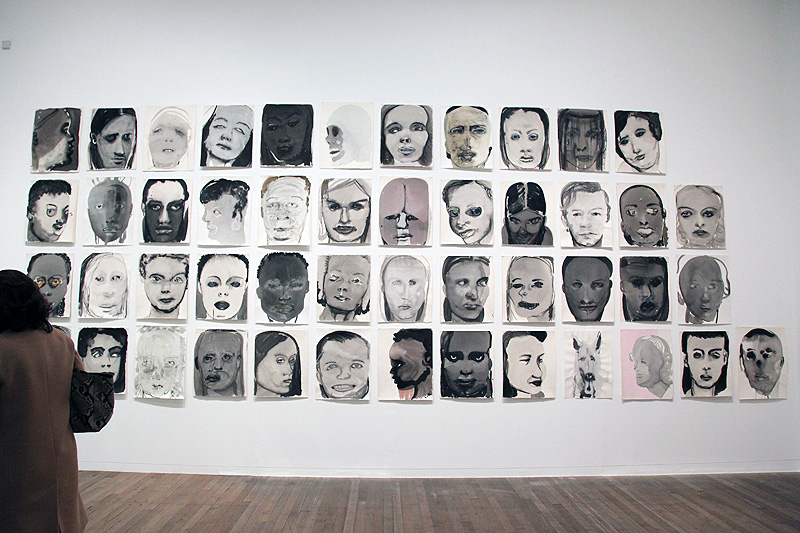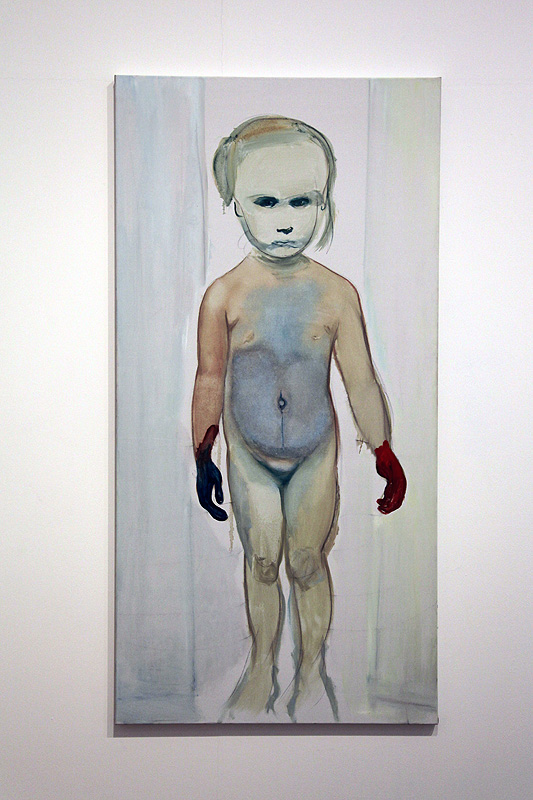Marlene Dumas: The Image as Burden at Tate Modern

The Image as Burden is the most complete exhibition of Marlene Dumas’ work ever held in Europe. As a part of it, Tate Modern is hosting film screenings called Miss Interpreted (Marlene Dumas) and has made a chronological display in its bookstore of the books and films that have influenced Dumas’ work. In a sense, the exhibition bursts across the borders of its rooms and takes over the whole museum, just like Dumas’ work that is never restrained by frames and always tries to get out of the canvas.
 It is only natural to ask: what makes this exhibition so special? The answer is Dumas herself; unlike other artists, she draws inspiration from pre-existing images rather than her life. The artist’s move to the Netherlands in 1976, where she first experienced the overwhelming power of the mass media, has had a great impact on her work. Her art is a loud social commentary that mirrors the way media represents women, sex, death, religion, the individual and the group.
It is only natural to ask: what makes this exhibition so special? The answer is Dumas herself; unlike other artists, she draws inspiration from pre-existing images rather than her life. The artist’s move to the Netherlands in 1976, where she first experienced the overwhelming power of the mass media, has had a great impact on her work. Her art is a loud social commentary that mirrors the way media represents women, sex, death, religion, the individual and the group.
The exhibition spans 14 rooms and showcases Dumas’ work in chronological order, with occasional disruptions from later works. Starting from image and text manipulations, the viewer is soon surprised by her large-scale canvases, pop of colour and close-ups – the artist’s very first exhibition paintings from the mid-1980s. Her work slowly gets more politicised, ranging from a strong criticism on the collective inactivity during the Holocaust to a mockery of the way mass media portrays black people as faceless, nameless figures. To counteract it, Dumas recovers the individual by painting a range of faces titled Black Drawings, using black as a colour as well as a racial construct.
One of the most interesting series is the Magdalenas – a portrayal of femininity through time and culture. Here, Dumas has paired a depiction of Naomi Campbell with one of Princess Diana – a marvellous juxtaposition of the differing representation of women in the media.
Even though Dumas often references popular culture, her work has a deeply personal feeling, too, as she bases some of her paintings on pictures of her daughter and of her mother. The artist’s presence even derives from the texts on the walls – describing her paintings in her own words, as she wants to write her own history. As Dumas questions the status of the image within contemporary society, her work feels rather current, making this one a must see.
Lyubomira Kirilova
Marlene Dumas: The Image as Burden is at Tate Modern until 10th May 2015, for further information visit here.




















Facebook
Twitter
Instagram
YouTube
RSS